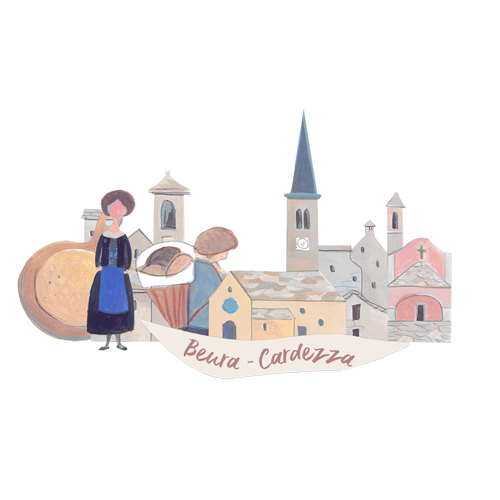Secondo alcune teorie, il nome Beura ed il precedente nome romano Bevola deriverebbero dalla beola, ovvero la pietra locale ossolana, uno gneiss a fibre bianche e nere cavato dalle falde del monte ed esportato sin dal Medioevo utilizzando la navigazione fluviale Toce-Lago Maggiore-Ticino-Naviglio. Un tempo tutto il lavoro di estrazione era eseguito a forza di braccia dai picasass: si inseriva l’esplosivo in alcuni fori realizzati nella roccia con un ferro tondo o esagonale (lo stamp), tenuto e fatto ruotare da un uomo mentre altri due battevano alternativamente, man mano aumentando la lunghezza dello stamp. Dai blocchi estratti con l’esplosione venivano ricavate le lastre praticando dei buchi con martello e ferro in cui si inserivano i punciott, ferri corti che venivano battuti con le mazze, oppure cunei in legno bagnati con l’acqua, che dilatandosi staccavano le lastre. Per trasportarle, venivano usati dei rulli ricavati dal tronco delle betulle, fatti scivolare sul minur, uno scivolo pavimentato di piccoli sassi che sfruttava la pendenza della montagna. Cave e minur sono visibili ancora oggi lungo il sentiero della Strada Romana che da Cuzzego conduce a Cardezza.
According to some theories, the name Beura and the previous Roman name Bevola would derive from beola, that is the local stone of Ossola, a gneiss with white and black fibres obtained from the layers of the mountain and exported since the Middle Ages using the river navigation line Toce-Lago Maggiore-Ticino-Naviglio. In the past all the extraction work was carried out using only arms by the picasass: the explosive was put into some holes made in the rock with a round or hexagonal bar (the stamp), held and rotated by a man, while two other men alternately beat, gradually increasing the length of the stamp. From the blocks extracted with the explosion the slabs were obtained by making holes with hammer and bar in which the punciott were inserted: they were short bars that were beaten with the mallets, or wooden wedges dampened with water, which detached the slabs by expanding. To transport them, some rollers, obtained from the trunks of the birches, were used: they were made to slide on the minur, a chute paved with small stones that exploited the slope of the mountain. Quarries and minur are still visible today along the path of the Roman Road that leads from Cuzzego to Cardezza.
TI TROVI A
YOU ARE IN
